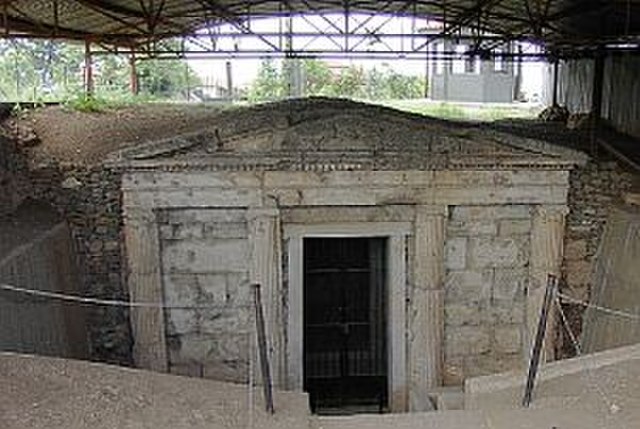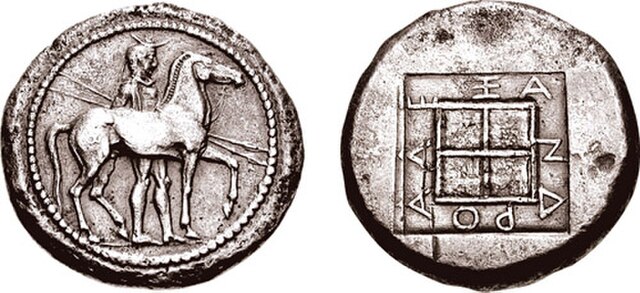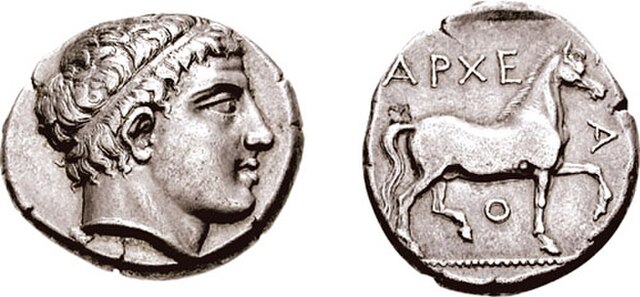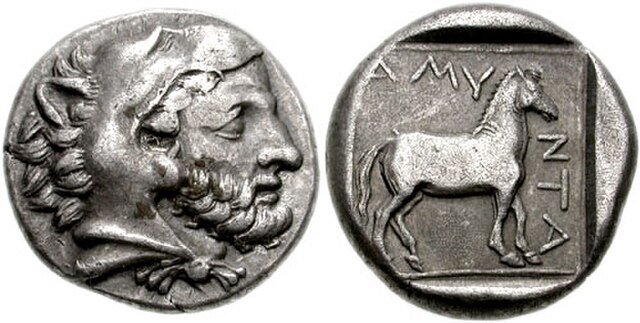Philip II of Macedon was the king (basileus) of the ancient kingdom of Macedonia from 359 BC until his death in 336 BC. He was a member of the Argead dynasty, founders of the ancient kingdom, and the father of Alexander the Great.
Bust of Philip II, Roman copy from a Greek original, from the Ny Carlsberg Glyptotek, Copenhagen.
Coin of the western Odrysian king Cetriporis, who was subjugated by Philip in the late 350s
Statue of Philip II, 350–400 AD. Rheinisches Landesmuseum Trier.
Roman medallion of Olympias, the fourth wife of Philip II and mother of Alexander the Great. From the Museum of Thessaloniki.
Macedonia (ancient kingdom)
Macedonia, also called Macedon, was an ancient kingdom on the periphery of Archaic and Classical Greece, which later became the dominant state of Hellenistic Greece. The kingdom was founded and initially ruled by the royal Argead dynasty, which was followed by the Antipatrid and Antigonid dynasties. Home to the ancient Macedonians, the earliest kingdom was centered on the northeastern part of the Greek peninsula, and bordered by Epirus to the southwest, Illyria to the northwest, Paeonia to the north, Thrace to the east and Thessaly to the south.
The entrance to one of the royal tombs at Vergina, a UNESCO World Heritage Site
A silver octadrachm of Alexander I of Macedon (r. 498–454 BC), minted c. 465–460 BC, showing an equestrian figure wearing a chlamys (short cloak) and petasos (head cap) while holding two spears and leading a horse
A Macedonian didrachm minted during the reign of Archelaus I of Macedon (r. 413–399 BC)
A silver stater of Amyntas III of Macedon (r. 393–370 BC)








